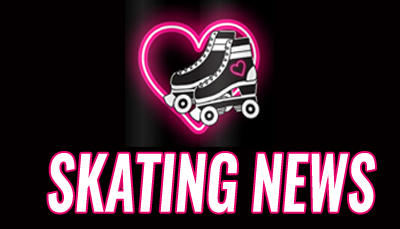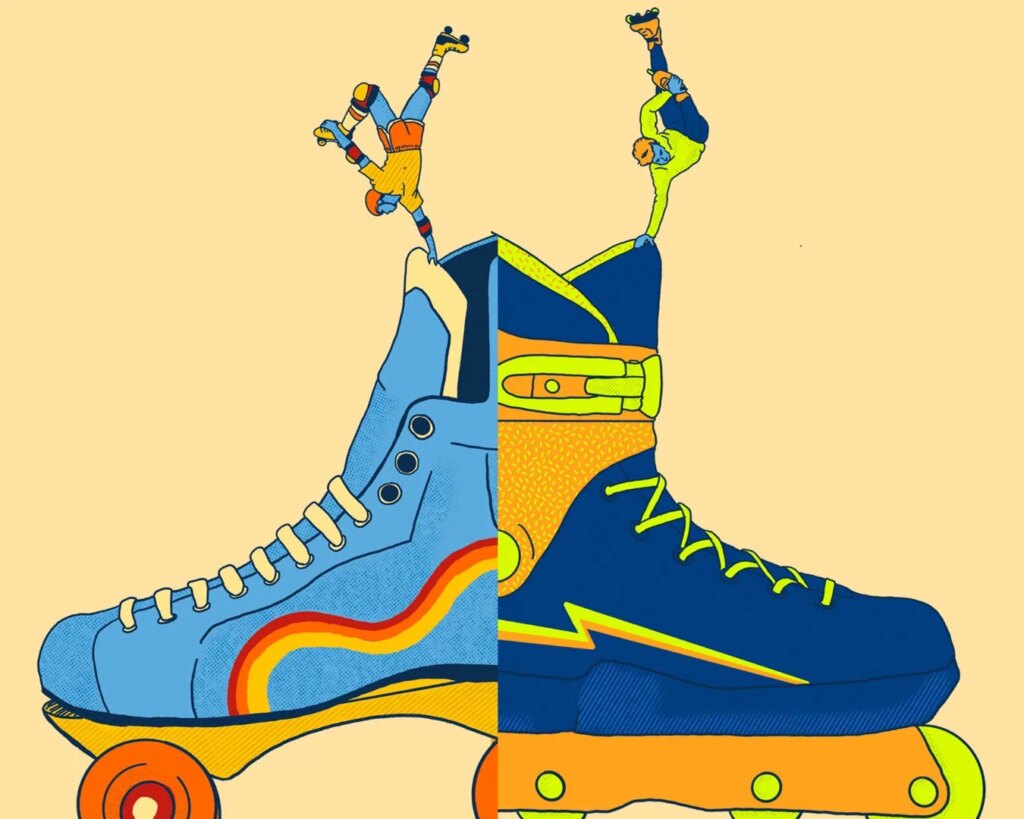From Quads to Blading: The Success Story of Rollerblade
To get a better understanding, let’s go back a few decades. In 1980, Scott and Brennan Olsen, two hockey-playing Minnesotan brothers, discovered an in-line skate while browsing in a sporting goods store. They thought that this design would make an ideal off-season hockey training tool. They refined the skate and began assembling the first in-line skates in the basement of their parents’ home. It was that same year that they founded the company that would become Rollerblade. For many years, it was the only manufacturer of in-line skates that had worldwide distribution. They were so successful that the trademark Rollerblade became synonymous with in-line skates and is still commonly used as both a verb, “Let’s go blading,” and a noun, “Your blades look sick,” to this day.
Rollerblade rolled out a clever marketing strategy, investing huge amounts of money in advertising and sponsoring in-line skating sports events, including the new trend: Aggressive skating! Other brands came on the scene too. And while many of the first-generation quad skaters in Europe stuck to their roller skates, a lot of second-gen, soon-to-be legends, like René Hulgreen (Denmark), Marcos Longares (Spain), Taig Khris (France), Toto Ghali (France), and others, transitioned. They were young, athletically at the top of their game, and active around the 1990s. Perfect timing for aggressive in-line skating, which by the mid ’90s became extremely popular at competitions, and was even included in the first ESPN X-Games in 1995. Media coverage and crowds were huge at all major events around the globe.
Quad skating had brought fun and excitement, but never money. As competitions and sponsorships came on the scene, many quad skaters who had been pushing their limits gave it a go, and it was quite easy for them. René Hulgreen transitioned to blading in 1994, after six years of roller skating. In an interview with ONEblademagazine, he said that it only took him a week before he could do everything on in-lines that he could do on roller skates. A month later, he was at the first Lausanne contest in Switzerland, where he took home gold.
Former Swiss pro skater Toto Ghali started roller skating as a kid in 1977. He switched to blading about a year after René. He says the reasons were simple. “All my friends had already transitioned; it was strange to be the only quad skater at sessions and contests.” Being able to make a living as a pro skater suddenly became an option. “All the in-line companies offered incredible conditions. Back then, I was covering my own travel, food, etc., and Rollerblade was paying me $2,000 a month, plus lots of bonuses,” Toto recalls.
Another factor that quad skaters have had to deal with until today is the accessibility and compatibility of hardware. They had to assemble and build their own setups to hit the ramps. The range of choices was not as large as it is today. An aggressive in-line boot, on the other hand, came ready to ride right out of the box.
Roots Do Matter
You can’t blame quad skaters for defecting. Quad skating missed out on the chance to create an industry in the niche of park/street skating. It stayed a grassroots underground thing. Aggressive blading also “died” after its short golden era, but it had already preserved its culture through events, videos, and many magazines.
Since the pandemic, we’ve seen a new development in skating. Today, we have a new generation of skaters, new brands, and the disciplines are growing closer together. It’s great to see that people skate together, have events together, and it doesn’t matter what’s under their feet. What matters are the roots. We must be careful not to forget our history, not to water it down, and not to erase it. We owe this to our sport and to the pioneers who paved the way almost 60 years ago!
—The article “Transitions: From Quads to Blading” originally appeared in DogDays Magazine 2024

